1664 - 1876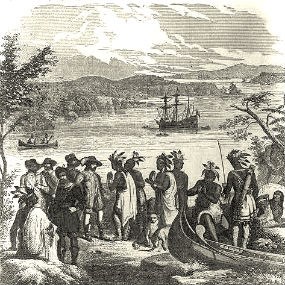
Library of Congress. By 1664, the Native Americans no longer used this Oyster Island for hunting and fishing. Although they had used the land for hundreds of years, Henry Hudson's arrival in 1609 and the subsequent creation of the Dutch colony in New Netherland eventually forced them to move. The combination of occupation, war, and disease brought by the Europeans decimated the local tribes and forced the survivors to move north and west. In 1664, the English took possession of New Netherland from the Dutch, renaming it New York. Ownership of New York was valuable because of its location and status as a port of commerce and trade. This Oyster Island was granted to Captain Robert Needham by the colonial Governor of New York, Richard Nicholls. Needham sold the island on December 23, 1667, to Isaac Bedloe - a Dutch colonist, merchant, and ship owner. Two years into Bedloe's ownership of the island, the new colonial Governor, Colonel Francis Lovelace, confirmed Bedloe's ownership of the land on the condition that Bedloe rename the island Love Island and allow persons facing civil charges to live there safely. In 1673, Bedloe died and the Dutch colonists temporarily overthrew Governor Lovelace. Within a year, the English had regained control of New York and Love Island was renamed Bedloe's Island. 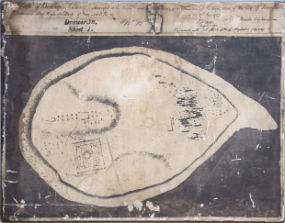
National Park Service. Statue of Liberty NM. In 1732, Bedloe's widow, Mary Bedloe Smith, who was facing bankruptcy, sold Bedloe's Island to New York merchants Adolph Philipse and Henry Lane. Although Philipse and Lane owned the island, they had very little control over its purpose - the city of New York took control of the island, using it as a quarantine station, inspecting incoming ships for smallpox. On January 22, 1746, Archibald Kennedy (later 11th Earl of Cassiles) purchased the island. Kennedy was the collector and receiver general of the Port of New York from 1722 to 1763 and hoped to use the island as a summer residence. By 1753, Kennedy had built a house and a lighthouse on the island, but by 1755 the city again took control of the island for use as a quarantine station for smallpox. 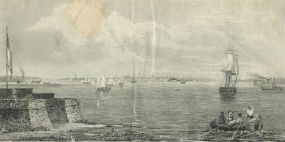
National Park Service. Statue of Liberty NM. After the American Revolution, Bedloe's Island continued to change ownership. From 1793 to 1796, the French (allies of the colonists during the Revolution) were ceded control of the island, appointed a Governor, and used the island as an isolation station. During this period, however, the young American government realized that Bedloe's Island had value beyond its use as a quarantine station. Since the British had easily invaded New York with very little resistance during the Revolution, the protection of New York became a top priority for the new government. With its clear view of the entrance to New York Harbor and New York City, Bedloe's Island had great strategic value as a defense post. The French were asked to leave the island and in 1796, ownership was transferred to the state of New York. In 1834, an interstate agreement between New York and New Jersey placed Bedloe's Island within New York. New Jersey, however, retained riparian rights to waters and all submerged land surrounding the island. 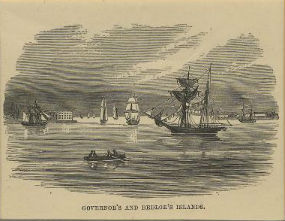
National Park Service. Statue of Liberty NM. By 1808, a number of forts were constructed (or rehabilitated) throughout New York Harbor to protect New York City from invasion. On Bedloe's Island, an eleven-point star-shaped fort initially known as the "Works on Bedloe's Island," was constructed. In 1814, this fort was renamed Fort Wood by New York Governor Daniel D. Tompkins in memory of Eleazer D. Wood, an army hero killed in action at Fort Erie during the War of 1812. Other newly erected or refurbished forts along New York harbor included: Fort Hamilton in Bay Ridge, Brooklyn, Fort Wadsworth on Staten Island, Fort Gibson on Ellis Island, Fort Clinton in Manhattan (now known as Castle Clinton), and Fort Columbus and Fort Williams on Governor's Island. In later years, many of these forts were used as recruiting and ordnance depots. 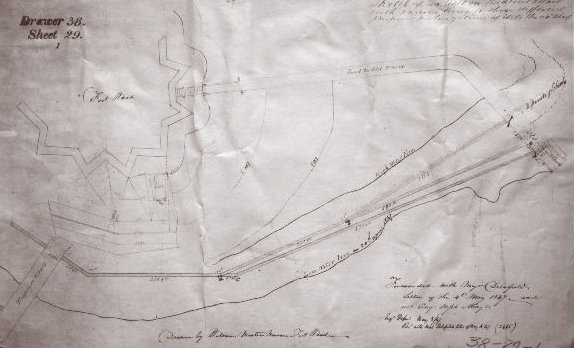
National Park Service. Statue of Liberty NM. Fort Wood served as an ordnance depot between 1851 and 1876. In 1851, about 600 men were stationed at the fort which was half covered with tents and very crowded. By 1852, soldiers were moving around the harbor and Fort Wood was almost deserted. Occupation picked up during the Civil War, beginning in 1861, when the fort served as a depot. The army remained active on Bedloe's Island until 1937. 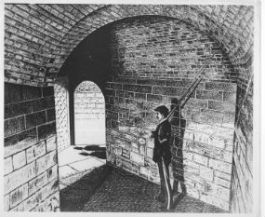
National Park Service. Statue of Libert NM. 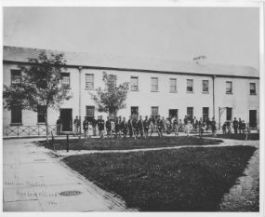
National Park Service. Statue of Liberty NM. |
Last updated: April 1, 2025
